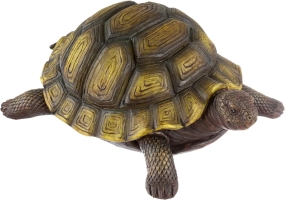 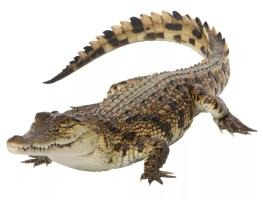 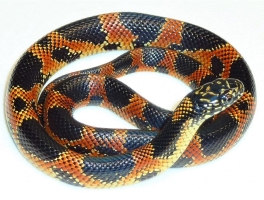 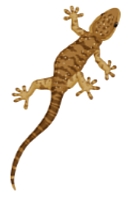
Once the dominant land vertebrates on the planet, (dinosaurs!), reptiles still occupy just about every single ecosystem outside of the extreme north and south. The study of reptiles,and amphibians is called herpetology.
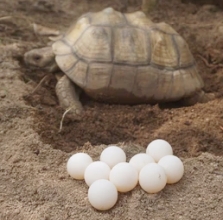 Reptiles are air-breathing vertebrates that have internal fertilization, amniotic development (the embryo is carried within the body and nourished), and scales covering part or all of their body. These animals are most easily recognized by their dry, scaly skin. Almost all reptiles are cold-blooded (their body temperature matches their surroundings), and most lay eggs (though some, like the boa constrictor, give birth to live young). Instead of possessing gills like fish or amphibians, reptiles have lungs for breathing. All reptiles have four legs, or are descended from creatures with four legs (including snakes, which still apparently carry some of the genes for making legs).
Reptiles are air-breathing vertebrates that have internal fertilization, amniotic development (the embryo is carried within the body and nourished), and scales covering part or all of their body. These animals are most easily recognized by their dry, scaly skin. Almost all reptiles are cold-blooded (their body temperature matches their surroundings), and most lay eggs (though some, like the boa constrictor, give birth to live young). Instead of possessing gills like fish or amphibians, reptiles have lungs for breathing. All reptiles have four legs, or are descended from creatures with four legs (including snakes, which still apparently carry some of the genes for making legs).
Reptile skin is covered in rough horny layers of scales, bony plates, or a combination of the two. These scales are composed of keratin, the same substance in nails, hair, and claws. The watertight skin allows the reptile to live and thrive in drier ecosystems. Reptiles shed their skin continuously throughout their lifetimes.
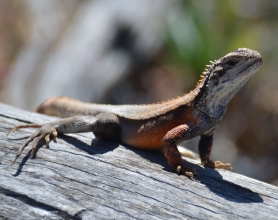 Reptiles have a low metabolic rate, which helps them to conserve energy, but this means they lack any internal means to keep their body temperature consistent. Without fur or feathers for insulation, reptiles do not have the means to stay warm in cold temperatures. Without sweat glands, they also cannot remain cool in hot temperatures.
Reptiles have a low metabolic rate, which helps them to conserve energy, but this means they lack any internal means to keep their body temperature consistent. Without fur or feathers for insulation, reptiles do not have the means to stay warm in cold temperatures. Without sweat glands, they also cannot remain cool in hot temperatures.
To compensate, reptiles rely on sunlight or shade as needed, to alter or maintain their internal temperature.
With a few exceptions, reptiles are meat eaters with relatively short digestive tracts. Because of their slower metabolism, they can digest food slowly and consume fewer meals. In the extreme, crocodiles, boas, and other reptiles can survive months on a single meal.
Herbivorous reptiles do exist - some iguanas, for example - but because they lack complex teeth, they have to swallow rocks and pebbles to grind up the plant matter in their digestive system, much like some bird species.
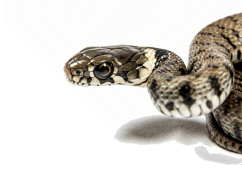 Many (but not all) reptiles have chemically sensitive organs in the nose or the roof of the mouth for identifying prey. This ability can replace their sense of smell.
Many (but not all) reptiles have chemically sensitive organs in the nose or the roof of the mouth for identifying prey. This ability can replace their sense of smell.
Snakes in particular sense chemicals in the air by flicking out their tongues rapidly. This has the effect of transferring odour particles from the tongue to the roof of the mouth.
Resources
HTML, animations & design by Bill Willis 2024
|

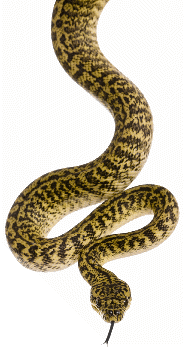
 Reptiles are air-breathing vertebrates that have internal fertilization, amniotic development (the embryo is carried within the body and nourished), and scales covering part or all of their body. These animals are most easily recognized by their dry, scaly skin. Almost all reptiles are cold-blooded (their body temperature matches their surroundings), and most lay eggs (though some, like the boa constrictor, give birth to live young). Instead of possessing gills like fish or amphibians, reptiles have
Reptiles are air-breathing vertebrates that have internal fertilization, amniotic development (the embryo is carried within the body and nourished), and scales covering part or all of their body. These animals are most easily recognized by their dry, scaly skin. Almost all reptiles are cold-blooded (their body temperature matches their surroundings), and most lay eggs (though some, like the boa constrictor, give birth to live young). Instead of possessing gills like fish or amphibians, reptiles have  Reptiles have a low metabolic rate, which helps them to conserve energy, but this means they lack any internal means to keep their body temperature consistent. Without fur or feathers for insulation, reptiles do not have the means to stay warm in cold temperatures. Without sweat glands, they also cannot remain cool in hot temperatures.
Reptiles have a low metabolic rate, which helps them to conserve energy, but this means they lack any internal means to keep their body temperature consistent. Without fur or feathers for insulation, reptiles do not have the means to stay warm in cold temperatures. Without sweat glands, they also cannot remain cool in hot temperatures.  Many (but not all) reptiles have chemically sensitive organs in the nose or the roof of the mouth for identifying prey. This ability can replace their sense of smell.
Many (but not all) reptiles have chemically sensitive organs in the nose or the roof of the mouth for identifying prey. This ability can replace their sense of smell.